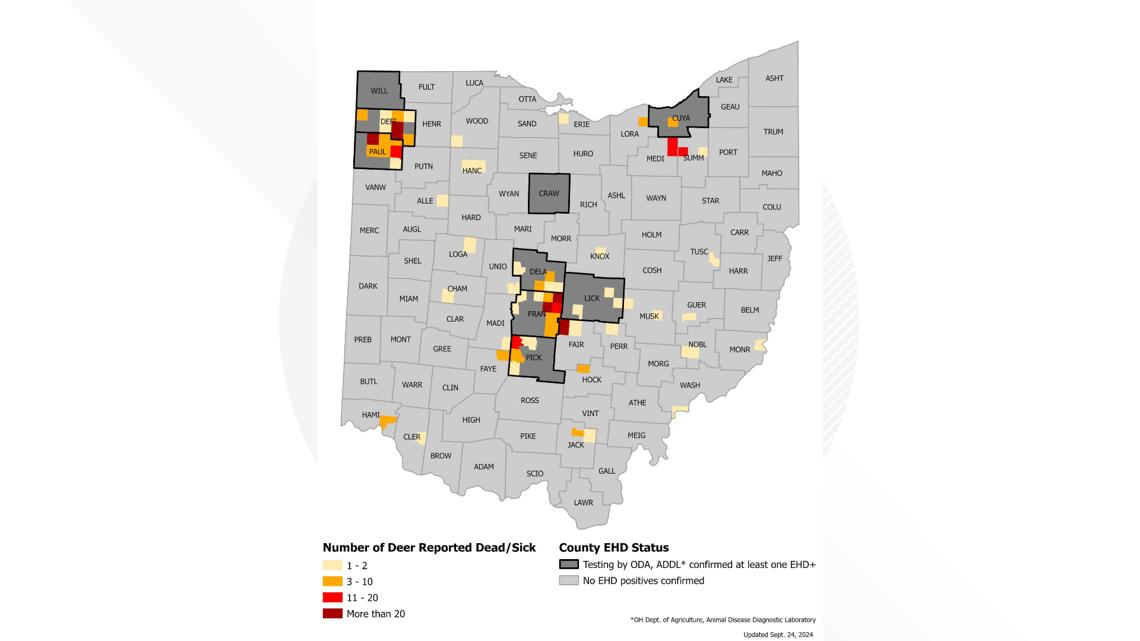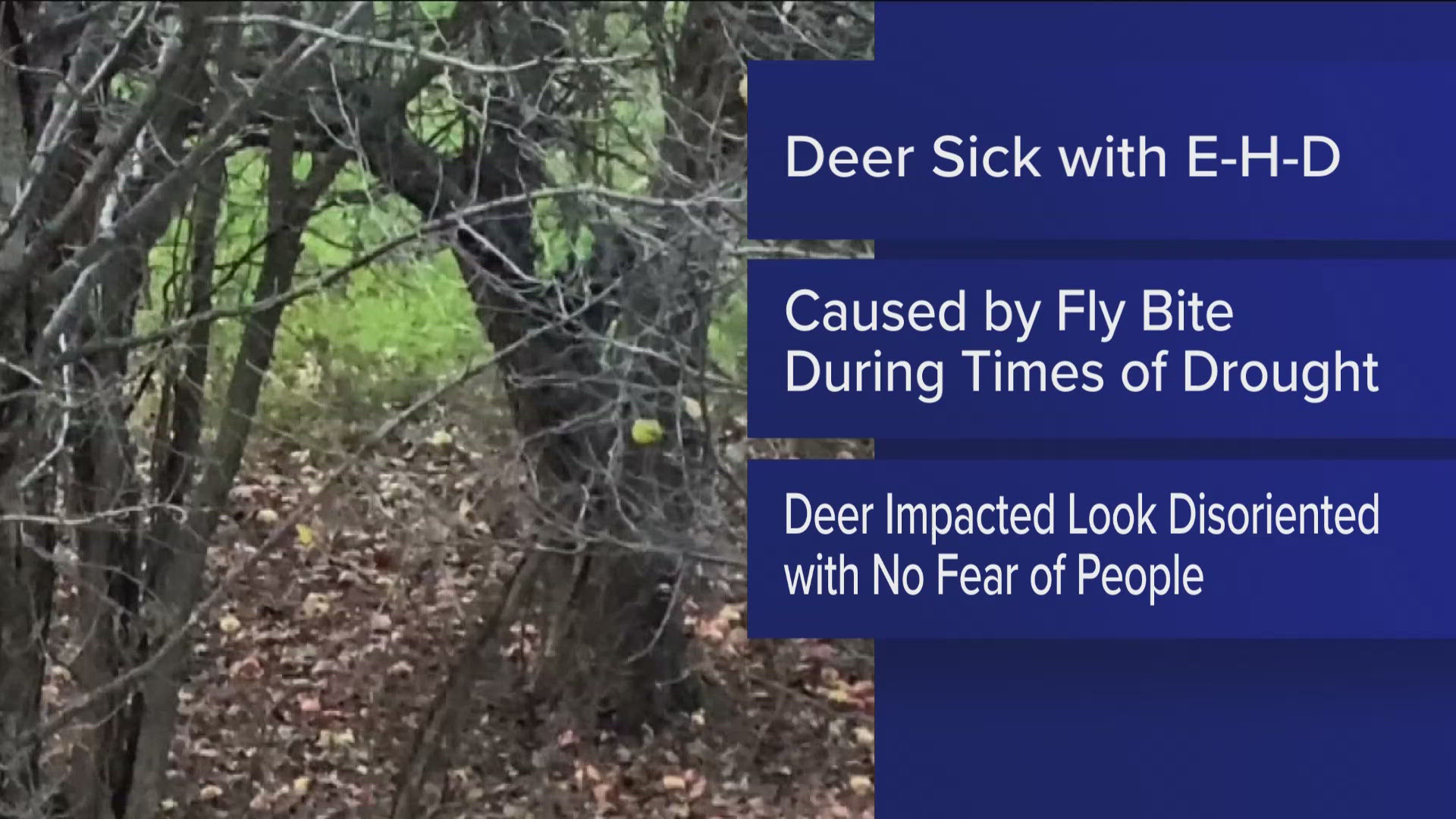TOLEDO, Ohio — The Ohio Division of Wildlife is asking the public to report sick deer, particularly as the division said it is seeing reports of epizootic hemorrhagic disease (EHD).
What is EHD?
According to the Ohio Department of Natural Resource's website, EHD is caused by the bite of an infected midge, a type of fly. It is one of the most common diseases in white-tailed deer, but the Midwestern populations of the species have little resistance to the disease, and there is no cure.
The disease is often associated with drought. As it is now, nearly the entire state of Ohio is under a drought, much of it severe or worse.
When infected, deer are likely to die within three days following the onset of symptoms. The disease is capable of causing high rates of deer mortality, though populations often bounce back within a few years.
In a social media post, the division said anyone who sees a deer behaving abnormally should report it online. You can do so at the link here.
How to know if a deer is sick
The Ohio Division of Wildlife said deer that are sick will exhibit the following symptoms, typically seven days after exposure to EHD:
- Deer appears disoriented and shows little or no fear of humans
- Appears feverish
- Pronounced swelling of head, neck, tongue and eyelids
- May have respiratory distress
Carcasses of EHD-infected deer are often found near water.
Is EHD transmissible?
Authorities said EHD does not pose a serious risk to livestock or humans. However, the division and ODNR said you should never kill or eat a sick deer, as it may be infected by something other than EHD.
When field dressing a deer, always use rubber gloves.
Where is EHD found?
The ODNR provided a map of EHD cases across the state. Current reports of the disease are concentrated primarily in Defiance, Paulding, Cuyahoga, Crawford, Delaware, Franklin, Pickaway and Licking counties. In these counties, testing has determined at least one case of EHD, though suspected cases were reported in multiple other counties.
A map of the reports is below:



